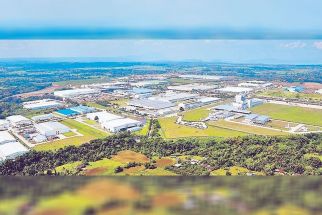Rural poverty

Recent discussions about government’s rice import policy brought out old unresolved issues. Everyone is claiming to speak for the interest of the poor farmers, but the farmers get no real help in the end.
The facts are clear: our farmers are deep in poverty. It is so bad that children of farmers would rather risk uncertainty in the urban jungles than be a farmer too. No wonder the average age of farmers is now said to be about 57.
Helping the farmers is a motherhood statement. Indeed, helping the farmers has always been used as a justification for a number of failed policies that have caused serious damage through the years.
Related to that “help the farmers” mantra is the policy calling for rice self-sufficiency. We can, theoretically, be self sufficient in rice, but many things must happen first. Government must revise policies, vastly improve farming support, and build infrastructure.
Unlike Thailand, Myanmar and Vietnam, we don’t have great rivers to naturally irrigate our rice fields. We don’t have enough of the vast plains that make it easy to adopt really large-scale rice farming. Worse, our land reform law has fragmented land ownership. No way can a few hectares of rice land be any good for anything other than subsistence farming, if at all.
Agri-business expert Rolando Dy of the University of Asia and the Pacific pointed out in his book Agri-business and Rural Progress that Philippine farm yield is lowest in the ASEAN, which not only affects food supply, but more so farm income. Rural poverty in our country at nearly 40 percent of rural folks is highest in the ASEAN.
The high price consumers pay for rice is supposed to help farmers. But the policy hasn’t made farmers less poor. It has made the cost of food for most Filipinos expensive. Even rice farmers pay the high price for rice in the off season. It has also made our labor cost expensive, compared to our competitors for industrial investment in Asean.
“Food spending,” Dy wrote, “generally declines as income increases. Citing government statistics, he pointed out that “overall average food share to total spending was 38 percent. However, poor families earning less that P100,000 a year spend on the average more than 60 percent.”
In comparison… in Singapore, food accounted for only 11 percent of total spending. Malaysians spent 24 percent on food.
One cannot think of food security only in terms of rice self sufficiency. In one of the chapters in Dy’s book, he pointed out that “income adequacy is primordial to food security in developing countries… The high proportion of food spending makes the poor highly vulnerable to spikes in food prices…”
In other words, we may be self sufficient in rice, but if the poor cannot afford it, they have no food security.
In a recent exchange of e-mails with Dy, I asked him what he thought about this almost religious belief in going for self sufficiency and protecting farmers from exports through NFA’s monopoly. He answered: “At what cost? Some of the suggestions are easy to say, but tough to execute because of lack of competence (from implementing agencies).”
He continued: “No benefit-cost analytics for crop support? What about crop diversification? Why is it that 34 percent of our farmers are poor? Malaysia rural poverty is 1.6 percent, while Indonesia and Thailand, 14 percent.”
Dy thinks “it is about market-led, competitive diversification.” Government has paid lip service about encouraging other high value crops specially in areas where the soil or the absence of irrigation makes planting rice inefficient.
Indeed, some of those high value crops can be exported and we can import cheaper rice in exchange. But it has not happened.
Dy asks: “Will rural poverty fall if the country became 100 percent rice sufficient???”
His advice (emphasis his): “LET NO TEMPORARY CONCERNS DERAIL US FROM THE COMMANDING HEIGHTS OF RURAL POVERTY.”
I guess he is saying we are too focused on forcing rice self sufficiency even when conditions for doing that are not there. In the process, it drives the poor farmer deeper into poverty. It also allows some people to take advantage of misguided policies to make millions at the public’s expense.
Economists, including some from PIDS, the government think tank, have been saying for years that it is a better policy to just keep the NFA for buffer stocks, and let the anyone import rice and pay a tariff. This will significantly bring down rice prices.
It is then proposed that the funds collected from the import tariff be allocated to directly help rice farmers. This way, we can be sure the support goes straight to those we intend to help and not to smugglers, cartel members and corrupt officials.
One of the economists in the think tank observed that even on the consumer side, NFA, as dispenser of low priced rice, is not that effective a mechanism… only three percent of the poor benefit from it.
“Remember the ERAP stores before? They are just ningas cogon. If you refer to the rice distributed by the NFA to its accredited retailers at a low price, the volume of that rice is only between five to 10 percent of consumption. Worse that subsidy may go to the retailers themselves who sell most of the NFA rice at commercial prices.”
A former NFA administrator agrees. He told me “closer scrutiny of NFA’s clientele bears the reality that most people who avail of NFA rice are not economically classified as poor.” He thinks the DSWD should be the agency distributing food coupons to the poor as they have a listing of the poor under CCT.
I know it is a complicated problem. But unless policymakers open their minds to new possibilities rather than insist on old approaches that have not worked for decades, the problems of rice availability and rural poverty will remain.
Boo Chanco’s e-mail address is [email protected]. Follow him on Twitter @boochanco.
- Latest
- Trending

























